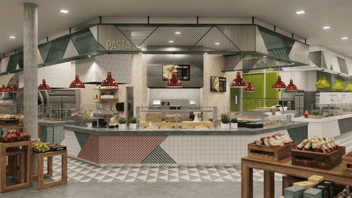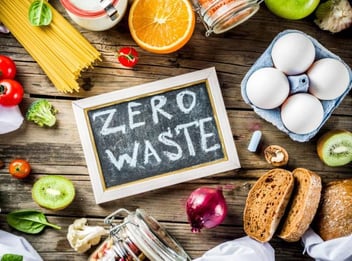3 Trends in Canada’s College and University Foodservice Scene

Canadian colleges and universities have long been at the vanguard of progressive trends in educational philosophy. Yet only more recently have such trends begun to change the landscape of university foodservice programs. Gone are the days of unhealthy food options and massive amounts of food waste.
Unfortunately, many people still fail to realize the numerous trends at play when it comes to Canadian foodservice programs. Here are three of the most important ones we're seeing in 2019:
Organic Foods
Twenty-first century college and university students place a much greater emphasis on self-care than generations past. As a result, healthy eating options have become more of a priority.
Traditional foodservice offerings often fell short in this regard. More often than not, cafeterias were stocked with unhealthy food items that were overly processed or perhaps made with conventional produce.
Today, however, more and more colleges are embracing sustainable, wholesome, and health-first philosophies. In many cases, this means shifting from conventionally-produced foods to organic alternatives. One of the most progressive examples of this trend can be found at the University of Winnipeg.
Since 2009, the University of Winnipeg has embraced an organic foodservice model in six cafeterias run by Diversity Food Services. This model applies not only to produce, but also to meats and dairy items. For instance, 100 percent of the chicken served at these cafeterias is certified to be hormone and antibiotic free.
Furthermore, a significant emphasis is placed on avoiding processed foods as much as possible. Items such as soups, sauces, sausages, and hamburgers are all prepared from scratch. Not only does this allow the cafeteria to minimize the amounts of unhealthy food additives found in processed foods, but it also results in tastier, more appealing food.
Sustainability Options
Moving toward an organic model often goes hand in hand with another key foodservice trend: sustainability. Sustainability takes numerous forms, meaning programs can make gradual changes toward a fully sustainable model. One of the most important aspects of sustainability involves sourcing fair or direct trade foods.
Likewise, placing an emphasis on locally produced foods also has a huge impact on sustainability. The University of British Columbia has taken this to an exemplary level, prioritizing food from their own UBC farm, which for the record produces 100 percent organic food.
Another effective way to boost sustainability involves reducing the amount of red meat served, and increasing the number of vegetarian and vegan offerings. Increasing the number of vegetable-based options also works toward a more health-conscious model.
Another key piece of any sustainability goal should be to encourage students to utilize reusable to-go containers. Many schools accomplish this by offering discounts to students who use reusable containers when moving through the tills. Increasing the cost of single-use containers will also encourage students to take a more pro-active, sustainable approach.
Food WasteContainers aren't the only contributor to unwanted waste. Food scraps have historically made up a huge amount of a foodservice program's overall waste. Reducing the negative impact of food waste begins by taking a proactive approach to compositing. Yet even then, excessive amounts of food waste may hurt a cafeteria's bottom line by increasing overall food costs.
The University of Alberta has embraced a new technology known as LeanPath to limit waste. The LeanPath process involves separating food waste into different categories and quickly weighing the scraps before sending them to the compost. This allows the cafeteria to track the amount of different waste types, thus more easily identifying and correcting inefficiencies. This process has reduced weekly food waste by an average of 32 kg.
Would you like to learn more about innovative ways to capitalize on college and university dining trends?
Our team of experts can help college and university foodservice directors implement equipment and supplies that can turn a lot of these trends into reality. Schedule some time with us today.
*** Please visit the WDC booth at CCUFSA and meet Sally, the incredible salad dispensing robot. While there, speak with our representatives to talk about your other equipment needs for September.











